Will History be repeated in Afghanistan: Can Kabul fall again?
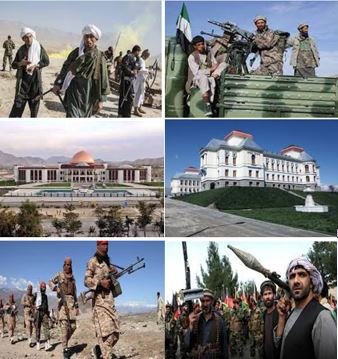

Afghanistan “Hindu Kush country” has seen many foreign aggressors starting from Darius I of Babylonia circa 500 B.C., and Alexander the Great of Macedonia in 329 B.C. to Mauryas of Indian Dynasty till it was conquered by Mahmud of Ghazni in the 11th century. It was also ruled by the first Durrani ruler, Ahmad Shah, who united the Pashtun tribes also known as the founder of the Afghan nation, in 1780.
After series of British-Afghan Wars (1838-42, 1878-80, 1919-21) Amanullah declares Afghanistan a monarchy in 1926, and Zahir Shah who becomes king in 1933 ruled for the next 40 years and brings a semblance of stability to the country[1].

Afghanistan faced the world with confidence. Revenue from its main export, the karakul lambskin, had grown steadily as the furriers, milliners, and clothiers of a stricken Europe decamped to the United States.
Although poor and undeveloped, Afghanistan in the late 1940s held $100m dollars in reserves way much than most of the European countries at that time.
In 1953, Zahir Khan introduces a number of social reforms including allowing women a more public presence. Afghanistan’s economic growth was splendor in the ’50s and ’60s. and the country was rushing towards the future. The people are “exploding out into the open,” The spirit of a new era is driving them at a furious pace.
It was 1952. Afghanistan was still a kingdom, and King Zahir had hired foreign technicians – including American engineers and construction specialists – to help build the new post-war Afghanistan. Post-World War Two.
When US vice-president Richard Nixon visited Kabul in 1953, Afghans were standing in a Kandahar street - as street vendors, their shoulders draped with numerous coats, smile for the camera but untampered by what happened next or hindsight but fresh, caught at a time when no one knew what the future might hold.
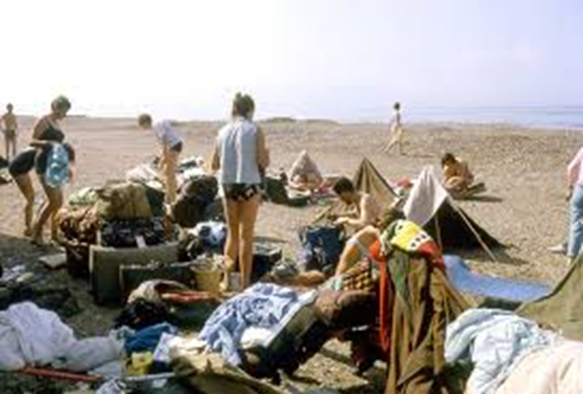
The Afghanistan “Land of the films” is full of promises of good times ahead. The fields are green, the streets are clean. People smiles, Women went to university, and Hippy culture was also surviving without fear.
“Afghans like to dance, to sing, to have fun,” he records. Plentiful food – fried fish, meat, fruit, and sweets. Afghan diet may not be abundant but no one can see the hunger that one witnesses in the neighboring country of “Pakistan” and beggars are seldom seen. Even though there are masses of people the country seems able to feed them all.”
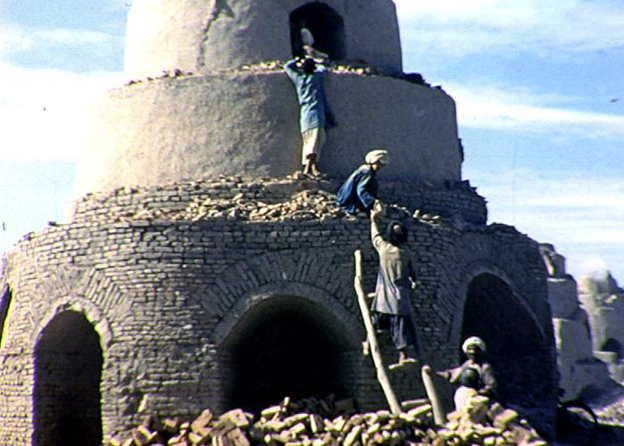
“Scores of brick kilns are growing up in every village of Afghanistan to supply the materials to build the new Afghanistan,” These villages were to house farmers on the newly irrigated lands and to settle the nomadic peoples, the village of Kuchi, whose grazing routes had been cut by the contentious creation of the Pakistani border.

King Zahir had hired the Morrison Knudsen company in 1946 in the world. Its engineers – who called themselves Emkayans – were building dams in Afghanistan. With the mission of irrigation for the deserts of the southern part of the country. At more than 1,000km, from its source in the Hindu Kush to the marshlands of the Iranian border, the Helmand is the longest river in Afghanistan. And in 1950 Boghra dam opened first, soon to be eclipsed by the much larger Dahla dam in 1952, then come to Kajaki. At 97m tall, Kajaki is only slightly smaller than the Aswan Dam on the River Nile[2].
Although highly expensive projects but these dams bring prosperity Farming increased, harvesting a surplus even at times of drought. Farmers grew and exported cotton for cash in thousands of tonnes. Few even recognized the flower of the opium poppy.

Next in infrastructure was the airport. Kandahar International Airport was the next big plan. It was a state-of-the-art super-modern complex built in the early 1960s for around $15m in grants and loans. Under its lofty brick arches, Kandahar International Airport was intended to rival Karachi or Delhi as a stopover for planes and passengers traveling between Europe and East Asia[2].
Afghans with pride in his blood were seen mentioning to the passengers at Airport. “There is a huge motel - about 100 rooms. Travelers between, say, Rome and Singapore could stay the night. It has the latest, the latest, technology - six or eight terrific underground fuel tanks with electronic controls, with lines out to the airport aprons. So, you could sit in the plane and punch a button, choose which fuel you wanted.” Developments in aircraft technology overtook Kandahar airport before these inventions could come into use around the globe.
Gazelle hunting was popular where Afghan families and their foreign counterparts would go out into the desert and get a gazelle for dinner.
An open-air cinema in the city of Khandhar and Kabul on Friday nights brought a touch of Hollywood.
Lashkar Gah, the first in the province of Helmand also witnessed the opening of the cinema. It showed all kinds of films from Bombay and Delhi, from Iran, and even from the USSR. Sergei Bodnarchuk’s War and Peace ran in the early 1970s.
A generation of innovation and investment set Lashkar Gah apart from other provincial cities. By the mid-1960s it had taken on a character and economy all its own. Civic services expanded; the hospital was the pride of the city.
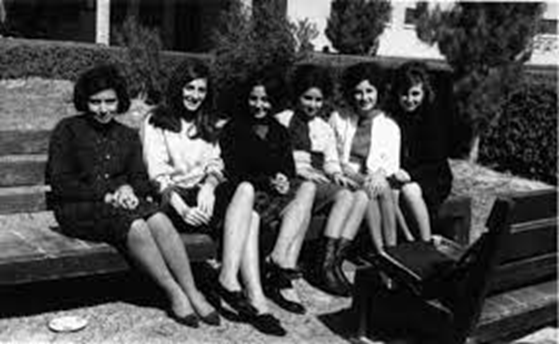
Approximately one million Afghans moved to the Helmand Valley at this time, drawn by the prospect of jobs, good schools, and prospects. Very many of these were educated people – their children would be the first in Afghanistan to have the option of single-sex or mixed schools.
People of every ethnicity and many languages lived side by side in Lashkar Gah, some in modern American-built houses with lawns, low fences, and front gardens.
“We grew up all together. No one said you are this, and we are that. Some of our neighbors were Americans. We used to invite them at Eid, they’d invite us to their parties. I remember Santa Claus would come, on a donkey, bringing us all presents. It was such a happy time,” says Saeeda Mahmood, whose father ran the cinema, and now lives in London, England[2].
In 1953, Gen. Mohammed Daoud Khan, cousin of the king Zahir Shah and Prime Minister looked at the Soviet Union, the communist nation for economic and military assistance. In 1956, Soviet Premier Nikita Khrushchev agreed to help Afghanistan, and the two countries become close allies.
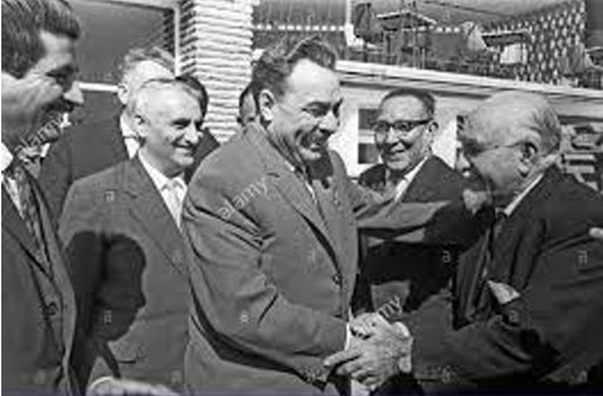
Since 1955 Moscow had provided military training and materiel to Afghanistan; by 1973, a third of active troops had trained on Soviet soil. Additionally, Daoud enjoyed the support of the People’s Democratic Party of Afghanistan (PDPA), founded in 1965 upon Marxist ideology and allegiance to Moscow. In 1967 the PDPA split into two factions: the Parchamists, led by Babrak Karmal (who supported Daoud), and the “Khalqis” led by Noor Taraki. For the next five years, Daoud attempted the impossible task of governing Afganistan’s Islamic tribal regions, while also struggling to reconcile the PDPA split.[3].
In the summer of 1973, Mohammed Daoud, the former Afghan Prime Minister, launched a successful coup against King Zahir while he was visiting Italy. Although Daoud himself was more nationalist than socialist, his coup was dependent on pro-Soviet military and political factions. But the more radical Khalq faction never fully recognized Daoud’s leadership, while Karmal viewed the coup largely as a means to consolidate his own power. In response, Daoud hoped to mitigate both of these threats by steering Afghanistan away from Soviet influence and improving U.S. relations, while decreasing the influence of radical elements in the government and military.
"KABUL HAS FALLEN TO DAOUD COUP"!!!
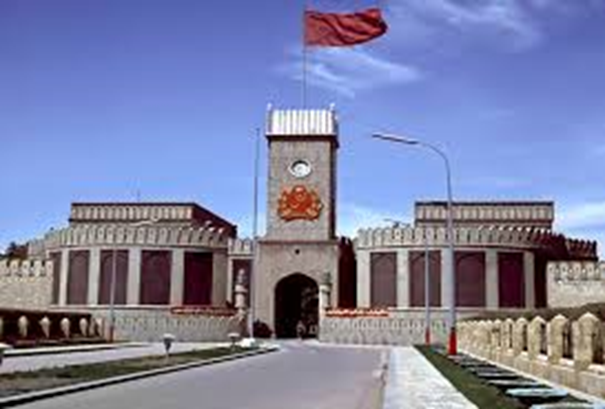
Daoud’s middle course ended in disaster. On April 28, 1978, soldiers aligned with Taraki’s “Khalq” faction assaulted the presidential palace, where troops executed Daoud and his family. In the following days Taraki became the Prime Minister, and, in an attempt to end the PDPA’s divisions, Karmal became Deputy Prime Minister.
"KABUL HAS NOW FALLEN TO KHALQ INSURGENTS"!!!
In Washington, this Communist revolution was met with alarm. The Carter administration recognized that Taraki would undo Daoud’s attempt to steer Afghanistan away from Moscow, and it debated whether to cut ties with Afghanistan or recognize Taraki in the hopes that Soviet influence could be contained. Although the President’s Assistant for National Security Affairs Zbigniew Brzezinski advocated the former course, Carter supported the Department of State’s advocacy of recognition. Shortly after the revolution, Washington recognized the new government and soon named Adolph Dubs its Ambassador to Afghanistan. Until his kidnapping and death at the hands of Afghan Shia dissidents in February 1979, Dubs strongly pursued good relations with the Taraki regime in the hopes that U.S. support would keep Soviet influence at bay.
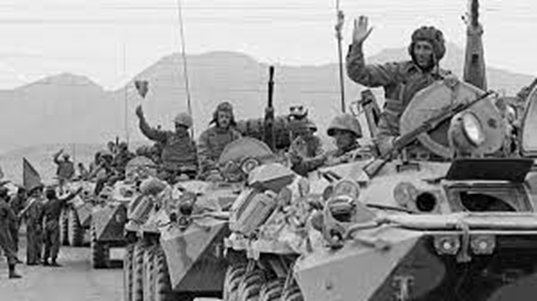
At the end of December 1979, the Soviet Union sent thousands of troops into Afghanistan and immediately assumed complete military and political control of Kabul and large portions of the country. This event began a brutal, decade-long attempt by Moscow to subdue the Afghan civil war and maintain a friendly and socialist government on its border. It was a watershed event of the Cold War, marking the only time the Soviet Union invaded a country outside the Eastern Bloc—a strategic decision met by nearly worldwide condemnation.
While the massive, lightning-fast military maneuvers and brazenness of Soviet political objectives constituted an “invasion” of Afghanistan, the word “intervention” more accurately describes these events as the culmination of growing Soviet domination going back to 1973.
"KABUL HAS FALLEN THIS TIME TO SOVIET UNION"!!!
American President Jimmy Carter was surprised by the Soviet invasion of Afghanistan, as the consensus of the U.S. intelligence community during 1978 and 1979—reiterated as late as September 29, 1979—was that “Moscow would not intervene in force even if it appeared likely that the Khalq government was about to collapse.” Indeed, Carter’s diary entries from November 1979 until the Soviet invasion in late December contain only two short references to Afghanistan and are instead preoccupied with the ongoing hostage crisis in Iran.
Undoubtedly, leaders in the Kremlin had hoped that a rapid and complete military takeover would secure Afghanistan’s place as an exemplar of the Brezhnev Doctrine, which held that once a country became socialist, Moscow would never permit it to return to the capitalist camp. The United States and its European allies, guided by their own doctrine of containment, sharply criticized the Soviet move into Afghanistan and devised numerous measures to compel Moscow to withdraw.

Despite the focus on Iran, Carter had authorized a collaboration between the CIA and Pakistan’s Inter-Services Intelligence (ISI), and through the ISI, the CIA began providing $500,000 worth of non-lethal assistance to the mujahideen on July 3, 1979—several months before the Soviet invasion.
In the aftermath of the invasion, Carter was determined to respond vigorously to what he considered a dangerous provocation. In a televised speech, he announced sanctions on the Soviet Union, promised renewed aid to Pakistan, and committed the United States to the Persian Gulf’s defense. Carter also called for a boycott of the 1980 Summer Olympics in Moscow, which raised a bitter controversy.
The thrust of U.S. policy for the duration of the war was determined by Carter in early 1980 when he initiated a program to arm the mujahideen through Pakistan’s ISI and secured a pledge from Saudi Arabia to match U.S. funding for this purpose. U.S. support for the mujahideen accelerated under Carter’s successor, Ronald Reagan, at a final cost to U.S. taxpayers of some $3 billion[4].
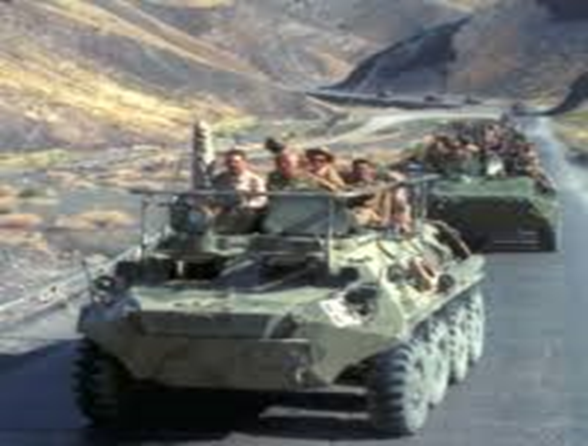
Afghanistan was a bleeding wound for the Soviet Union. Each year, the Red Army suffered thousands of casualties. Numerous Soviets died of disease and drug addiction. The quick occupation had bogged down into a huge economic drain at a time of tightening Soviet resources. In 1988, Soviet Premier Mikhail Gorbachev announced his intention to withdraw Soviet troops. Despite Gorbachev’s continued military and economic assistance to Najibullah, Afghanistan’s communist president, most analysts believed the Najibullah would quickly collapse. The CIA expected that, at most, Najibullah would remain in power for one year following the Soviet withdrawal[5].
The Soviets were unable to quell the insurgency and withdrew from Afghanistan in 1989, precipitating the dissolution of the Soviet Union. However, the decision to route U.S. aid through Pakistan led to massive fraud as weapons sent to Karachi were frequently sold on the local market rather than delivered to the Afghan rebels. Karachi soon “became one of the most violent cities in the world.” Pakistan also controlled which rebels received assistance. Of the seven mujahideen groups supported by Zia’s government, four espoused Islamic fundamentalist beliefs—and these fundamentalists received most of the funding[4].

Following the 1989 withdrawal of the Soviet military, Afghan president Najibullah managed to maintain power for three years without his patrons. In 1992, ethnic Tajik mujahidin forces captured Kabul and unseated the communist president. However, Rabbani, Ahmad Shah Masud, and ethnic Uzbek commander General Rashid Dostum could not control the prize.
Afghanistan became a maelstrom of shifting alliances. It was in the backdrop to this fighting that the Taliban arose, not only in Afghanistan but also among Afghan refugees and former mujahidin studying in the madaris (religious colleges) of Pakistan.
The beginning of the Taliban’s activity in Afghanistan is shrouded in myth. Territorial conquest began on October 12, 1994, when 200 Taliban seized the Afghan border post of Spin Baldak. Less than a month later, on November 3, the Taliban attacked Kandahar, the second-largest city in Afghanistan. Within 48 hours, the city was theirs. By February 11, 1995, they controlled 9 of Afghanistan’s 30 provinces. On September 5, 1995, the Taliban seized Herat, sending Ismail Khan into an Iranian exile. Just over one year later, Jalalabad fell, and just 15 days later, on September 26, 1996, the Taliban took Kabul.
KABUL FALL FOR FOURTH TIME AND NOW TO PAKISTAN ISI CREATED TALIBAN !!!

The attention of the world was drawn to the Taliban in Afghanistan in the wake of the 11 September 2001 World Trade Center attacks in New York. The Taliban were accused of providing a sanctuary for the prime suspects – Osama Bin Laden and his al-Qaeda movement.
On October 7, 2001, a US-led military coalition launched attacks in Afghanistan, and by the first week of December, the Taliban regime had collapsed. The group’s then-leader, Mullah Mohammad Omar, and other senior figures, including Bin Laden, evaded capture despite one of the largest manhunts in the world.
Many senior Taliban leaders reportedly took refuge in the Pakistani city of Quetta, from where they guided the Taliban. But the existence of what was dubbed the “Quetta Shura” was denied by Islamabad[6].
In 2001, after initial airstrikes by the United States and Britain on military targets, the United States sends about 1,300 troops to Afghanistan.
One after another, cities controlled by the Taliban begins to fall with the help of Afghanistan’s Northern Alliance soldiers. By December 2001, the U.S. force grows to 2,500 as troops scour the mountainous Tora Bora region looking for bin Laden. The Taliban is largely ousted, and an interim Afghan government is established. After serving as interim leader, Hamid Karzai is elected president in Afghanistan’s first national democratic election in 2004. He builds a personal rapport with Bush; the two leaders chat frequently by videoconference. But relations gradually sour.
"More than 775,000 U.S. troops have been deployed over the 19-year conflict, many repeatedly. The war has cost trillions of dollar. Many US Soldiers died in action in 19 year long war, of those, 2,300 have died and more than 20,600 were wounded in action, according to Defense Department figures. Since 2009, when the United Nations began systematically documenting civilian casualties, at least 100,000 Afghan civilians have been injured or killed"[7].
In mid of April, Newly Elected President Biden declared that the USA will withdraw all its troops from Afghanistan over the coming months, completing the military exit by the 20th anniversary of Sept. 11, 2001, attacks that drew the United States into its longest war.
“This is the immediate, practical reality that our policy review discovered,” said one person familiar with the closed-door deliberations who, like others, spoke on the condition of anonymity to discuss policy planning. “If we break the May 1st deadline negotiated by the previous administration with no clear plan to exit, we will be back at war with the Taliban, and that was not something President Biden believed was in the national interest.”
The goal is to move to “zero” troops by September, the senior administration official said. “This is not conditions-based. The president has judged that a conditions-based approach . . . is a recipe for staying in Afghanistan forever. He has reached the conclusion that the United States will complete its drawdown and will remove its forces from Afghanistan before September 11th.”
As US troops are leaving Afghanistan and have vacated Bagram Airfield without prior notice, the Taliban are taking over provinces in Afghanistan, slowly and steadily. To date i.e. July 8th, 2021, the Taliban has taken over more than 120 districts.
“CAN KABUL SAVE ITSELF OR WILL FALL AGAIN IN THE HANDS OF TALIBAN???“
[1] A Historical Timeline of Afghanistan | PBS NewsHour
[2] Helmand’s Golden Age (bbc.co.uk)
[3] Milestones: 1977–1980 – Office of the Historian (state.gov)
[4] The United States and the Mujahideen | History of Western Civilization II (lumenlearning.com)
[5] Who Is Responsible for the Taliban? | The Washington Institute
[6] Who are the Taliban? – BBC News
[7] A timeline of the U.S. war in Afghanistan – Washington Post
DISCLAIMER: The author is solely responsible for the views expressed in this article. The author carries the responsibility for citing and/or licensing of images utilized within the text.
